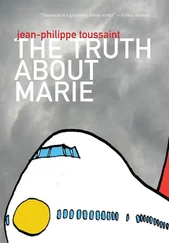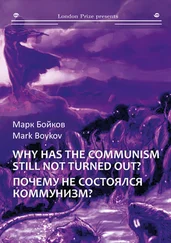This isn’t just about cities or fire departments. This is about history, paths, luck, and “installed base” effects. Think of incandescent bulbs. Or universities (or tenure). Paper money. The post office. These are all examples of organizations or technologies that persist largely for historical reasons, not because they remain the best solution to the problem for which they were created. They are often obstacles to much better solutions.
Obviously this list will get longer in the near future. Perhaps multilane freeways join the list, right behind the internal combustion engine. Or increasingly costly and dysfunctional public markets. Malls as online commerce casualties. Or even venture capitalists in the age of AngelList and Kickstarter. How about geography-based citizenship? All of these seem vaguely ossified, like they’re in the way—even if most people aren’t noticing, yet.
But this is not a list-making game. This is not some Up with Technology exercise where we congratulate ourselves at how fast things are changing. This is the reverse. History increasingly traps us, creating paths—and endowments and costs, both in time and money—that must be traveled before we can change directions, however desirable those new directions might seem. History—the path by which we got here, and the endowments and effluvia it has left us—is an increasingly large weight on our progress. Our built environment is an installed base, like an ancient computer operating system that holds back progress because compatibility gives such an immense advantage.
The writer William Gibson once famously said, “The future is already here—it’s just not very evenly distributed.” I worry more that the past is here—it’s just so evenly distributed that we can’t get to the future.
GARY MARCUS
Professor of psychology; director, NYU Center for Language & Music; author, Guitar Zero: The New Musician and the Science of Learning
There are known knowns and known unknowns, but what we should be worried about most is the unknown unknowns. Not because they are the most serious risks we face but because psychology tells us that unclear risks in the distant future are the risks we’re less likely to take seriously enough.
At least four distinct psychological mechanisms are at work. First, we are moved more by vivid information than by abstract information (even when the abstract information should in principle dominate). Second, we discount the future, rushing for the dollar now as opposed to the two dollars we could have a year later if we waited. Third, the focusing illusion (itself perhaps driven by the more general phenomenon of priming) tends to make us dwell on our most immediate problems even if more serious problems loom in the background. Fourth, we have a tendency to believe in a just world, in which nature naturally rights itself.
These four mechanisms likely derive from different sources, some stemming from systems that govern motivation (future discounting), others from systems that mediate pleasure (belief in a just world), others from the structure of our memory (the focusing illusion, and the bias from vividness). Whatever their source, the four together create a potent psychological drive for us to underweight distant future risks we cannot fully envision.
Climate change is a case in point. In 1975, the Columbia University geochemist Wallace S. Broecker published an important and prescient article in Science called “Climatic Change: Are We on the Brink of a Pronounced Global Warming?” but his worries were ignored for decades, in part because many people presumed, fallaciously, that nature would somehow automatically set itself right. (And in keeping with our tendency to draw inference primarily from vivid information, a well-crafted feature film on climate change played a significant role in gathering public attention, arguably far more so than the original Science article.)
Oxford philosopher Nick Bostrom has pointed out that the three greatest unknowns we should worry about are biotechnology, nanotechnology, and the rise of machines more intelligent than human beings. Each sounds like science fiction and has in fact been portrayed in science fiction, but each poses genuine threats. Bostrom posits “existential risks”—possible, if unlikely, calamities that would wipe out our entire species, much as an asteroid appears to have extinguished the dinosaurs. Importantly, many of these risks, in his judgment, exceed the existential risk of other concerns that occupy a considerably greater share of public attention. Climate change may be more likely, and certainly is more vivid, but is less apt to lead to the extinction of the human species (even though it could conceivably kill a significant fraction).
The truth is, we simply don’t know enough about the potential biotechnology, nanotechonology, or future iterations of artificial intelligence to calculate what their risks are. Compelling arguments have been made that in principle any of the three could lead to human extinction. These risks may prove manageable, but I don’t think we can manage them if we don’t take them seriously. In the long run, biotech, nanotech, and AI are probably significantly more likely to help the species, by increasing productivity and limiting disease, than they are to destroy it. But we need to invest more in figuring out exactly what the risks are and preparing for them. Right now, the United States spends more than $2.5 billion dollars a year studying climate change but (by my informal reckoning) less than 1 percent of that total studying the risk of biotech, nanotech, and AI.
What we really should be worried about is that we are not quite doing enough to prepare for the unknown.
JUAN ENRIQUEZ
Managing director, Excel Venture Management; author, As the Future Catches You: How Genomics & Other Forces Are Changing Your Life, Work, Health & Wealth
“How else can one threaten other than with death? The interesting, the original thing, would be to threaten someone with immortality.” Jorge Luis Borges’ response to the thugs in the Argentine Junta combines guts and fear in equal measure. He did not so much fear torture in this world as much as a life continually reexamined and reappraised throughout the ages.
We should all heed his warning, as we are all rapidly becoming immortal through electronic tattooing. As we all post more and more information on who we are, what we do, like, dislike, think, and say, a big data portrait emerges that gets ever harder to lose, modify, erase. In a big data world, we don’t just leave bread crumbs behind, we voluntarily and involuntarily leave giant, detailed pointillist portraits of our every day.
It used to be only royalty, presidents, megastars, and superstar athletes who had every aspect of their daily lives followed, analyzed, scrutinized, criticized, dissected. Now ubiquitous cameras, sensors, tolls, RFIDs, credit cards, clicks, friends, and trolls describe, parse, and analyze our lives minute by minute, day by day, month by month. Habits, hatreds, opinions, desires are recorded and will be visible for a long, long time. What you wore and ate, with whom and where, what you said and did, where you slept…. There is more than enough data and inside dirt on almost all of us to enable a weekly Page 6 embarrassment, a People magazine hero profile, and a detailed biography, bitter and sweet.
Few understand how recently the shift to ubiquitous and permanent recording occurred. High-definition video was expensive and cumbersome; that’s why you don’t see hundreds of September 11th real-time videos on YouTube. Handheld, hi-def movie cameras, ubiquitous and cheap today, were not widely available in 2001. It used to be that most of the street cameras were posted and hosted by gated communities, store owners, police or traffic authorities. Not only have these security cameras gotten more and more effective (a single DC camera issued 116,734 tickets in less than two years) but video cameras of all types became almost disposably inexpensive. So cheap, high-def cameras and sensors have spread like bedbugs. We are surrounded by thousands of cameras operated by endless security groups, cabs, home monitors, someone’s phone, babysitters, beach boardwalk promoters, surfers, marketers, “citizen” newsmakers, weather bugs, and dozens of other folks with faint excuses to film permanently. It’s not just the filming itself that’s the game changer; rather, it is the almost negligible cost of archiving. This used to be expensive enough that tape was simply overrecorded after a few minutes or hours. Now all is kept. We now see and know one another in ways previously unimaginable. (Just browse the hundreds of rapidly breeding reality-TV channels and millions of YouTube posts.)
Читать дальше












